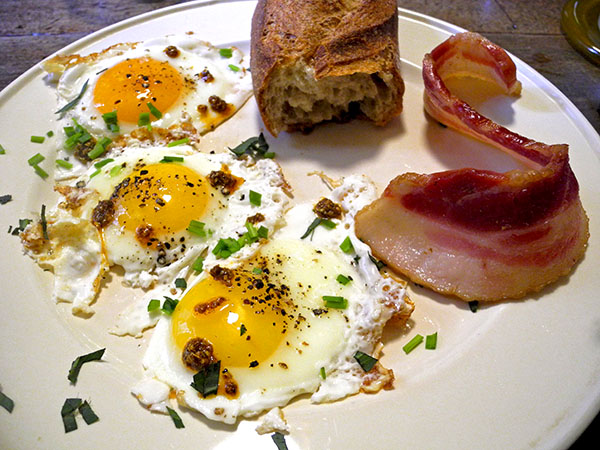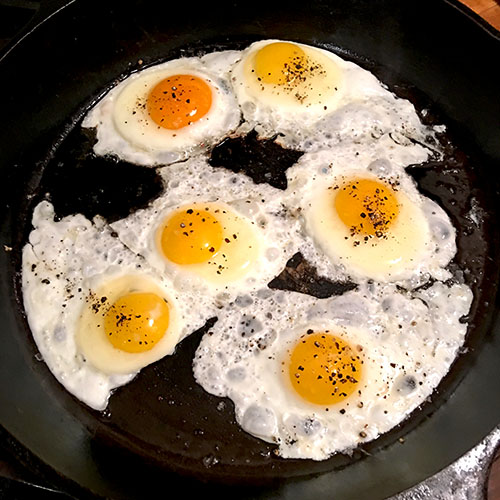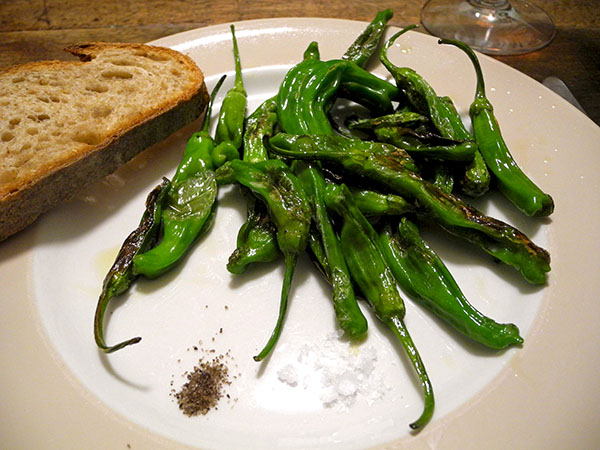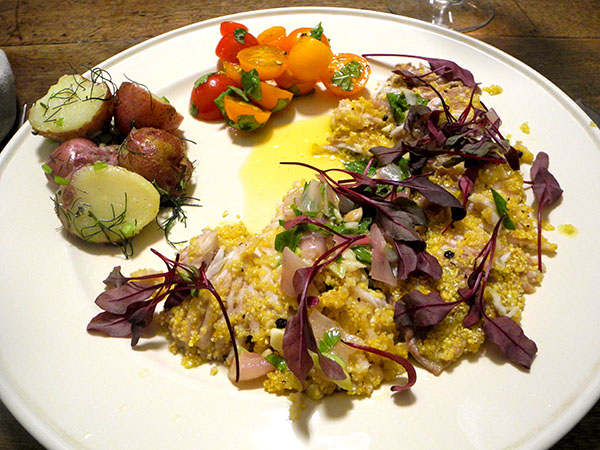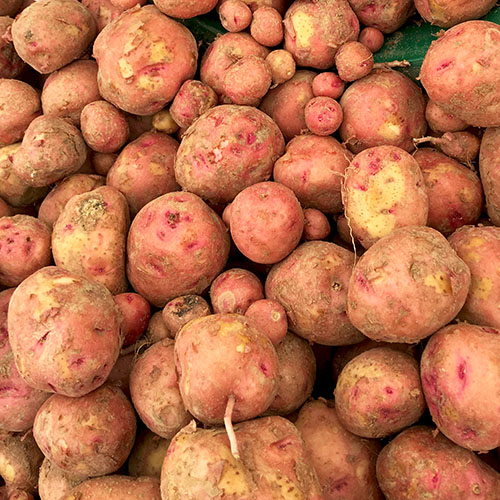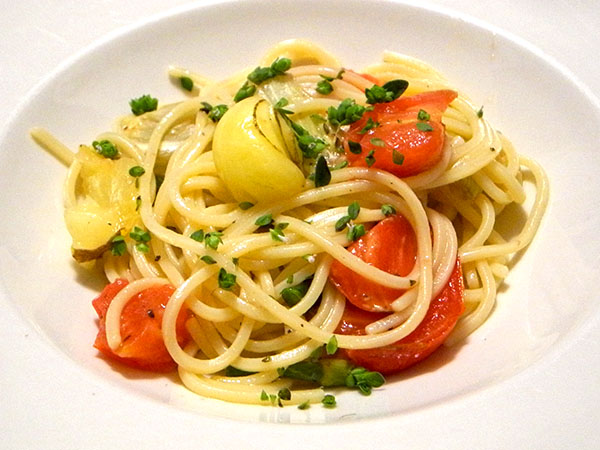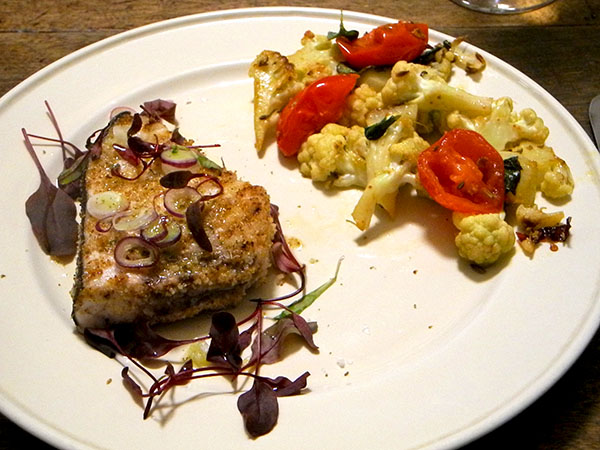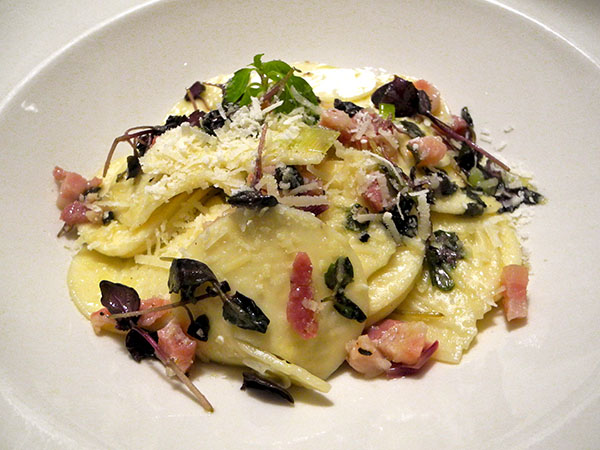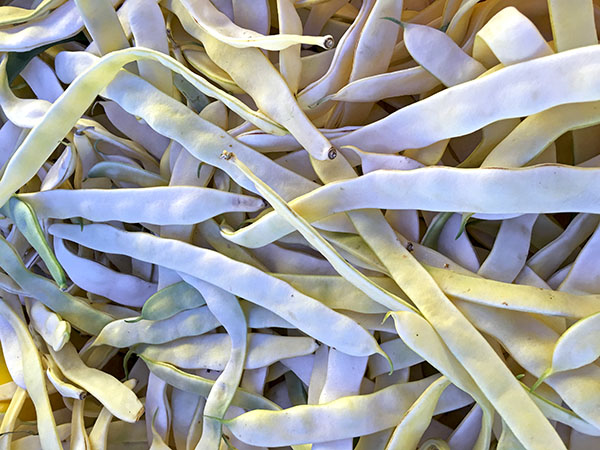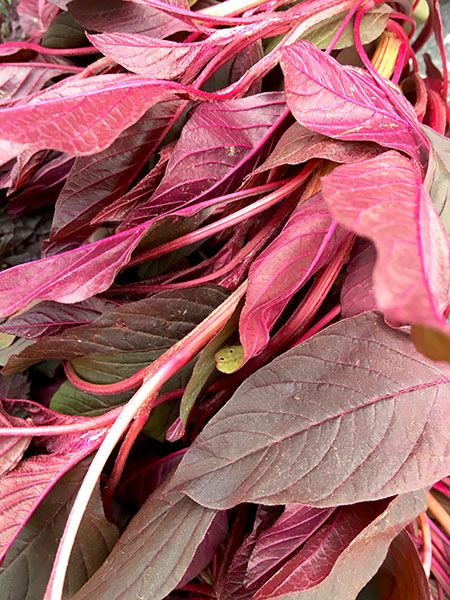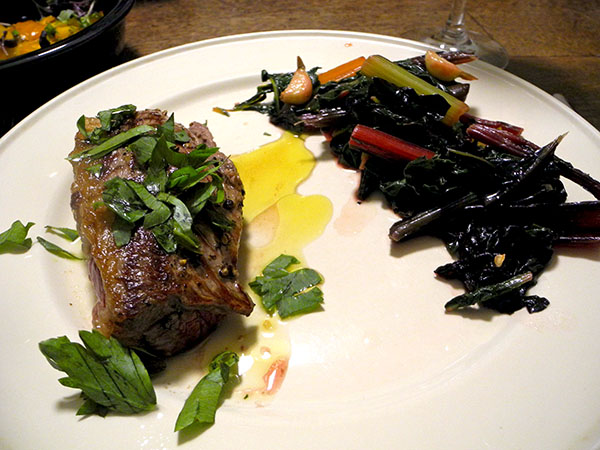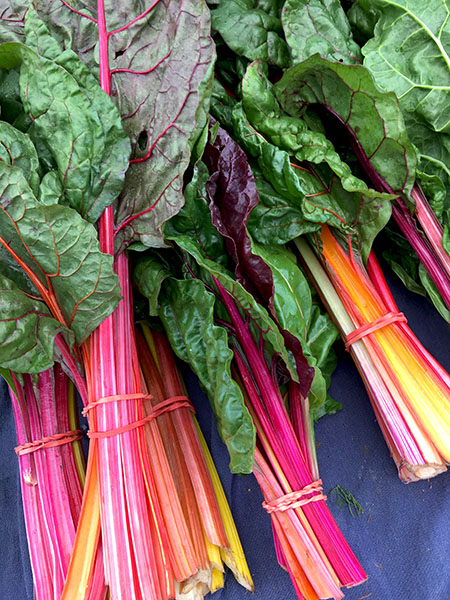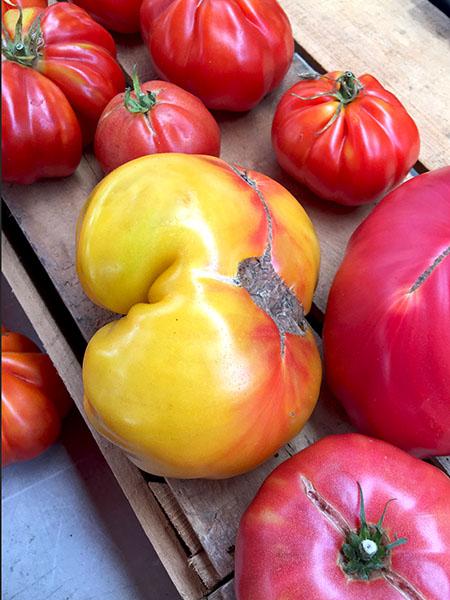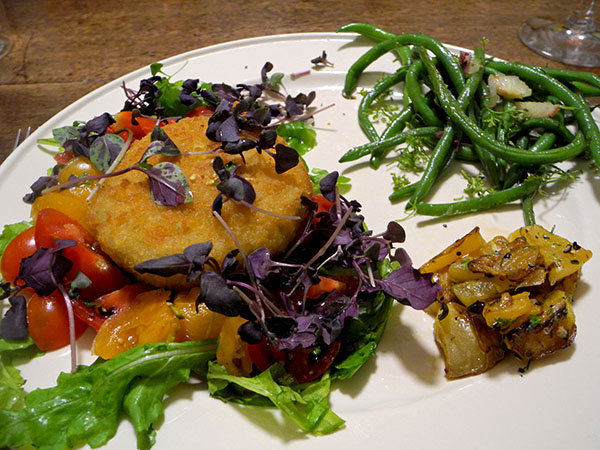
Gamey. The duck was definitely more gamey this time than we remember it ever being, but for us that’s a good thing. The next day, I described it to one of the people I see regularly behind the Hudson Valley Duck Farm counter in the Greenmarket. He told me that the breed of duck they raise hasn’t changed [in many years] and then asked me how large the breast had been, suggesting that it might have been because of the age of the duck, but we both agreed that one pound was not out of the norm.
Apparently it was just a gamey duck, a very good gamey duck.
- a one-pound boneless duck breast from Hudson Valley Duck Farm, the fatty side scored in cross hatching with a very sharp knife, the entire breast then sprinkled with a mixture of sea salt, freshly-ground Tellicherry pepper, and a little bit of turbinado sugar (which, in our kitchen, means infused over time with a vanilla bean), the duck left standing for 45 minutes or so before it was pan-fried, fatty side down first, in a tiny bit of oil over medium heat, draining the oil part of the way through (to be strained and used in cooking later, if desired), removed when medium rare and cut into the 2 portions at that time to be certain of its doneness, left to sit for several minutes before finishing it with a drizzle of organic lemon, a sprinkling of micro beet greens from Two Guys from Woodbridge, and a bit of Campania olive oil (the tenderloin, removed earlier from the breast and also marinated, is always fried very briefly near the end of the time the breast itself is cooking)
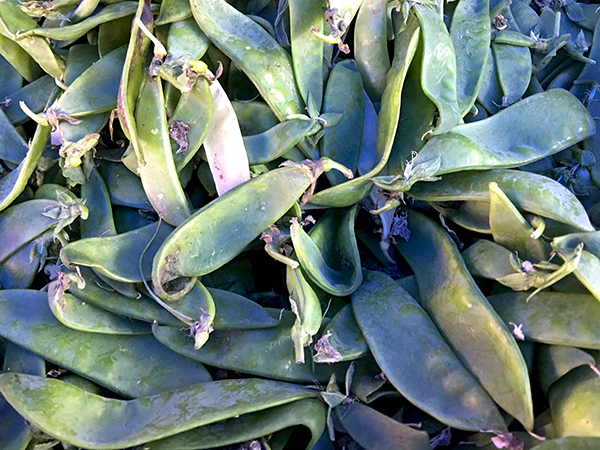
- about a quarter to a third of a pound of green snow peas from Norwich Meadows Farm, sautéed in olive oil with a little sea salt for a minute or so, then a couple of spring shallots from Lani’s Farm (including some of the green stem), sliced on the diagonal, added, along with a pinch of sugar, and tossed with the peas, which were sautéed for another 2 minutes or so, the heat turned off, and the zest of half of a small organic lemon from Trader Joe’s, some chopped spearmint from Lani’s Farm, a bit of freshly-ground Tellicherry pepper, and a little lemon juice stirred in
- the wine was a California (Sonoma) red, Jacqueline Bahue Cabernet Franc Clarksburg 2014
- the music was Johann Adolf Hasse’s ‘Cleofide’, William Christie directing the Cappella Coloniensis
